Disclosure: This article contains affiliate links. We may earn a commission from purchases at no extra cost to you, which helps our travel content.
Fifteen years after my first encounter with Alaska's raw beauty, I find myself drawn back to these northern waters time and again. Sitka, nestled between towering mountains and the island-studded Pacific, represents everything I've come to love about the Last Frontier. Unlike the cruise-dominated ports of Juneau or Ketchikan, Sitka offers a more authentic connection to Alaska's marine heritage. This past summer, I spent a week exploring its waterways, discovering that in this remarkable corner of the world, boats aren't just transportation—they're a way of life, a cultural touchstone, and your gateway to wilderness experiences that remain gloriously untamed.
Understanding Sitka's Maritime Geography
Sitka's position on Baranof Island's western shore means that unlike many Alaskan communities, it faces the open Pacific rather than sheltered inside passages. This geographical reality shapes everything about marine travel here. The community spreads along a narrow strip between mountains and sea, with most residents living within view of Sitka Sound—a body of water dotted with over 1,000 islands and islets.
This archipelagic landscape means that boats aren't a luxury but a necessity. During my week-long stay, I quickly realized that understanding Sitka's waterway network is as essential as knowing street layouts in a typical city. The sound itself functions as a natural harbor, protected by the volcanic cone of Mt. Edgecumbe rising from Kruzof Island to the west.
What makes this setting particularly remarkable is how the indigenous Tlingit people navigated these waters for millennia before European contact, developing sophisticated knowledge of tides, currents, and seasonal patterns. Their traditional cedar canoes have evolved into today's modern fishing fleet and water taxis, but the intimate connection to these waterways remains unchanged.

💡 Pro Tips
- Study marine charts before arrival to understand the layout of Sitka Sound
- Download the NOAA Marine Forecast app for real-time weather conditions
- Learn basic tide table reading—activities in Sitka revolve around tidal schedules
Essential Marine Transportation Options
My exploration of Sitka's waterways revealed five distinct transportation options, each offering unique advantages depending on your adventure goals.
1. Water Taxis These nimble craft serve as Sitka's equivalent of ride-sharing services. Local operators like Sitka Sound Ocean Adventures provide on-demand transportation to remote beaches, trailheads, and outer islands. During my stay, I used them twice to access the Cross Trail's northern terminus and saved hours of hiking. Expect to pay $120-200 per hour depending on distance and group size.
2. Alaska Marine Highway System The state ferry system connects Sitka to communities throughout Southeast Alaska. Unlike the rushed schedule of cruise ships, these working vessels allow you to experience the Inside Passage at a more meaningful pace. I boarded in Juneau for the 8-hour journey to Sitka, spending the time on the observation deck with my binoculars spotting orcas and sea lions along the way.
3. Fishing Charters Beyond just catching fish, these excursions provide access to remote waterways while learning from captains with encyclopedic knowledge of local waters. Half-day charters start around $200 per person, with full-day experiences ranging from $350-500.
4. Kayak Rentals For the self-sufficient explorer, kayaking offers intimate connection with Sitka's marine environment. Rental outfitters like Sitka Sound Ocean Adventures provide quality sea kayaks with all necessary safety equipment. I spent two full days paddling the protected waters of Eastern Channel, discovering hidden coves inaccessible by larger craft.
5. Small Cruise Vessels Companies like Allen Marine and Alaskan Dream Cruises operate day trips and multi-day excursions on vessels carrying 20-60 passengers. These smaller boats navigate passages too narrow for conventional cruise ships, providing access to wildlife hotspots while maintaining a low environmental impact.
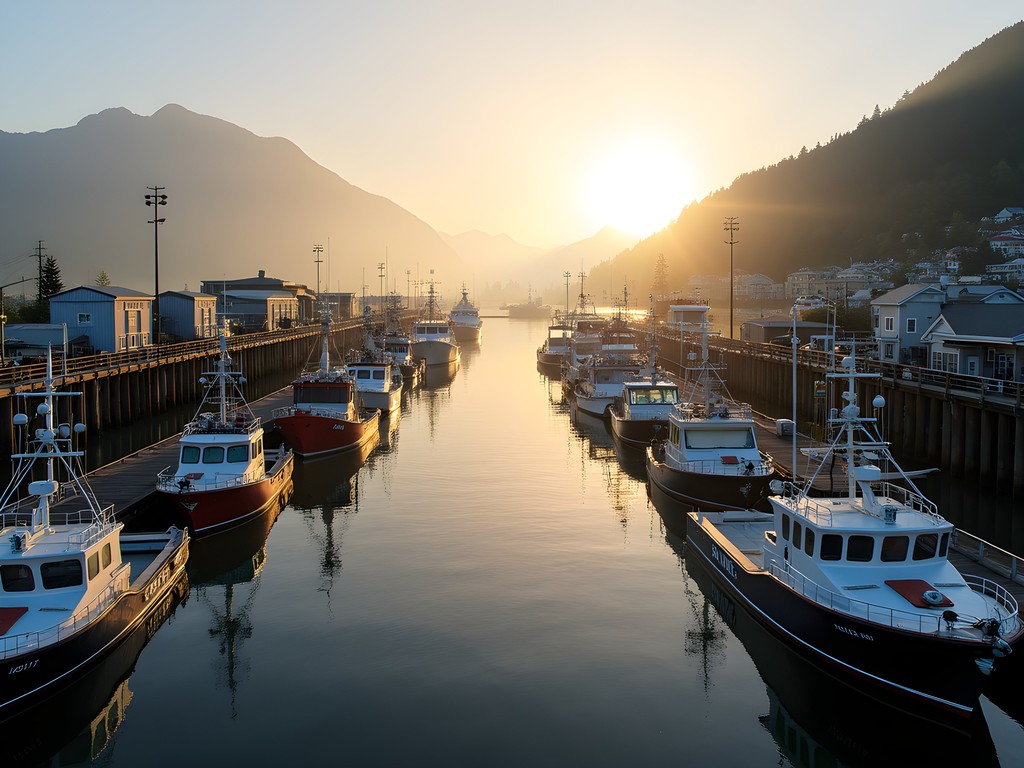
💡 Pro Tips
- Book water taxis at least 48 hours in advance during peak summer season
- Bring motion sickness remedies even for short trips—Pacific swells can be unpredictable
- Always pack extra layers and rain gear for any water excursion
Wildlife Viewing by Water
Sitka's marine ecosystem ranks among North America's most diverse and accessible wildlife viewing environments. Unlike land-based observation, which often requires long hikes and patience, water travel puts you directly into wildlife habitat.
During my week exploring these waters, I encountered humpback whales on five separate occasions. The most memorable sighting occurred near Kruzof Island, where a mother and calf breached repeatedly less than 100 yards from our boat. Sea otters proved nearly ubiquitous throughout Sitka Sound, floating on their backs while using their bellies as natural dining tables.
For serious wildlife photography, I recommend scheduling a dedicated wildlife cruise. Allen Marine's 3-hour tours ($150) provide stabilized viewing platforms ideal for using telephoto lenses. Bring a weather-resistant camera with zoom capabilities, as wildlife encounters often happen in misty conditions.
What surprised me most was the accessibility of Sitka's marine bird colonies. Eastern Channel hosts thousands of tufted puffins, whose comical appearance and remarkable diving abilities provide endless entertainment. St. Lazaria Island, a protected wildlife refuge accessible only by boat, hosts over 500,000 nesting seabirds during summer months.
For the truly adventurous, kayaking provides wildlife encounters impossible from larger vessels. Paddling silently through kelp forests, I observed harbor seals at close range without disturbing their natural behavior. Just remember that all marine mammals are protected by federal law—maintain minimum distances of 100 yards from whales and 50 yards from seals and sea lions.
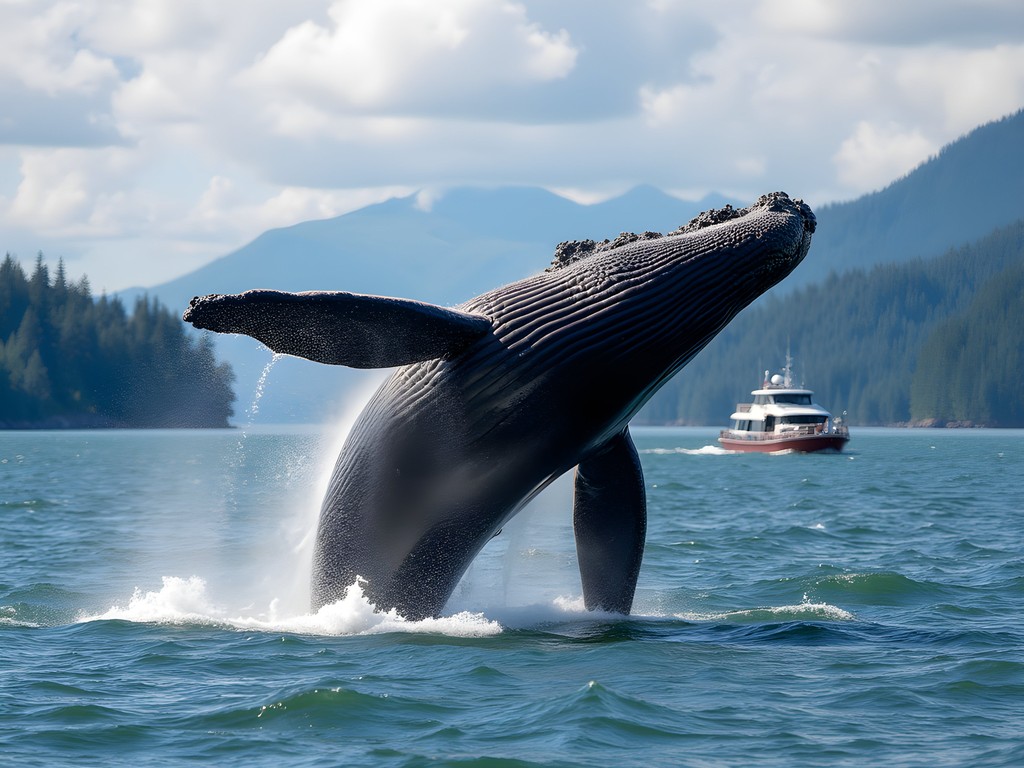
💡 Pro Tips
- Early morning (6-9am) offers optimal wildlife viewing with calmer waters
- Bring binoculars with image stabilization for spotting distant wildlife from moving boats
- Ask local captains about recent wildlife sightings—they share information with each other daily
Connecting with Local Maritime Culture
What distinguishes Sitka from other Alaskan destinations is its living maritime heritage—a blend of Tlingit traditions and commercial fishing culture that continues to define daily life. To truly understand this community, you must engage with the people whose livelihoods depend on these waters.
The Sitka Maritime Heritage Center offers excellent context through exhibits on traditional and modern boat-building techniques. Their two-hour harbor walking tour ($25) provides insights into working waterfront operations rarely visible to visitors.
For a deeper connection, I highly recommend scheduling a day trip with a local fishing family through the Fishermen's Direct Marketing Association. I spent a memorable day with Captain James, a third-generation troller who demonstrated traditional salmon fishing methods while sharing stories of growing up on these waters. These experiences typically cost $300-400 but include fresh seafood and perspectives impossible to gain otherwise.
Don't miss the Alaska Raptor Center's lesser-known marine bird rehabilitation facility, where injured seabirds receive specialized care. Their behind-the-scenes tour ($75) demonstrates the interconnectedness of Sitka's marine and terrestrial ecosystems.
Perhaps my most meaningful cultural experience came through participating in the Sitka Seafood Festival held each August. Volunteering at the fish-cleaning station alongside local residents, I learned traditional preservation techniques passed down through generations. The fillet knife I purchased there has become both a practical tool and cherished souvenir of this authentic cultural exchange.

💡 Pro Tips
- Learn basic Tlingit greetings to show respect when interacting with indigenous community members
- Visit the Sitka Sound Science Center's touch tanks to understand the marine species sustaining local culture
- Schedule harbor tours for weekday mornings when commercial fishing activity is highest
Planning Your Water-Based Sitka Itinerary
After multiple visits to Southeast Alaska, I've developed a framework for maximizing water-based experiences in Sitka. This suggested itinerary balances structured tours with independent exploration while accounting for weather contingencies—an essential consideration in this maritime climate.
Day 1: Orientation Begin with the Sitka Historical Walking Tour (includes harbor area), then visit the Sitka Sound Science Center to understand the marine ecosystem you'll be exploring. Afternoon: Harbor kayak rental (2-3 hours) to gain confidence on water and observe harbor operations.
Day 2: Wildlife Focus Morning wildlife cruise (3-4 hours) to St. Lazaria Island bird colonies and whale feeding grounds. Afternoon visit to Alaska Raptor Center to understand ecosystem connections. Evening: Sunset photography cruise around Eastern Channel islands.
Day 3: Cultural Immersion Schedule a half-day experience with a local fishing family or Native cultural guide. These arrangements typically require advance booking through the Sitka Cultural Center. Evening: Process and organize photos using a portable external hard drive to backup images from your adventures.
Day 4: Independent Exploration Rent a kayak for full-day exploration of nearby islands (weather permitting). Alternatively, arrange water taxi service to remote beaches like Kamenoi Point for beachcombing and hiking. Evening: Seafood dinner at a restaurant serving locally-caught fish.
Day 5: Active Adventure Fishing charter (half-day or full-day) targeting seasonal species. These excursions provide both recreation and insight into sustainable harvesting practices. Prepare for variable conditions with quality waterproof gloves to protect hands during extended time on water.
Day 6: Outer Reaches Arrange water taxi service to more distant locations like Kruzof Island for hiking to volcanic beaches. This combines marine transportation with terrestrial exploration. Allow 6-8 hours for this full-day adventure.
Day 7: Integration Schedule lighter activities allowing flexibility. Visit Maritime Heritage Center to contextualize your experiences. Consider a final evening kayak rental to photograph Sitka's harbor at sunset—the golden light on Mt. Edgecumbe creates unforgettable images.
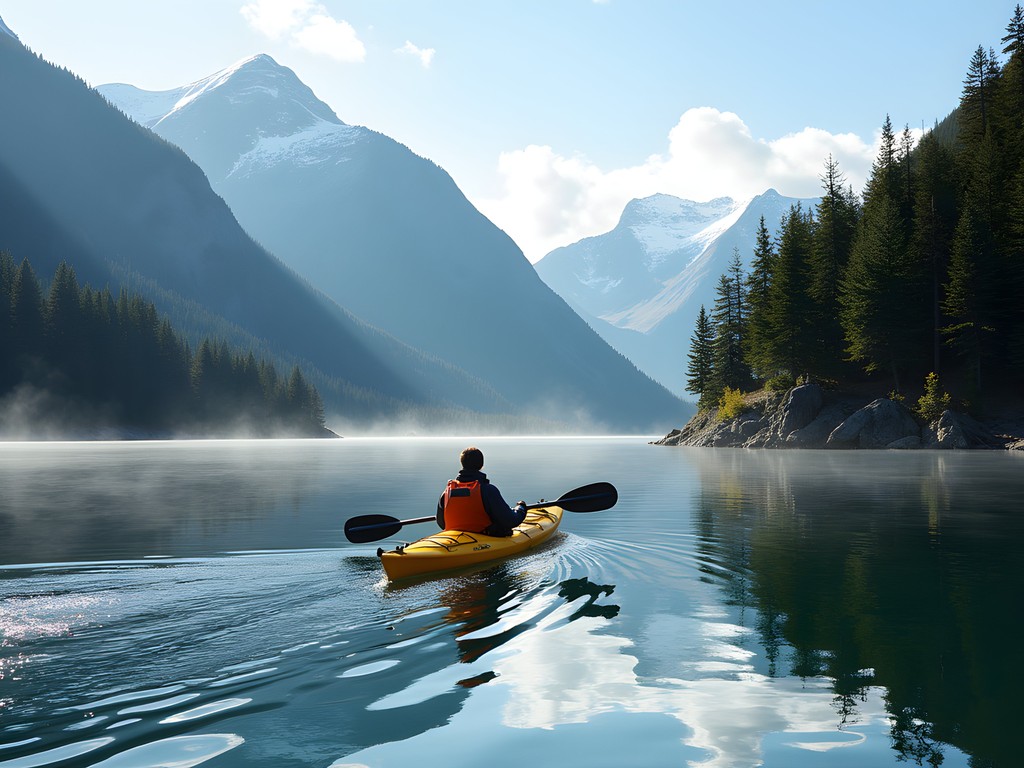
💡 Pro Tips
- Build weather buffer days into your itinerary—marine excursions frequently reschedule due to conditions
- Book your most important water activities early in your trip to allow for weather rescheduling
- Purchase a waterproof phone case rather than relying on zip-lock bags for electronics protection
Final Thoughts
As my floatplane lifted off from Sitka's harbor on my final morning, I gazed down at the intricate network of waterways I'd spent a week exploring. What began as intimidating complexity had transformed into a navigable landscape filled with meaning and connection. Sitka's marine environment offers far more than transportation between points—it provides a profound way to understand Alaska's cultural heritage, ecological richness, and enduring wilderness.
The key to meaningful engagement with these waters lies in approaching them with both respect and curiosity. Whether you're observing humpbacks from a wildlife cruise, learning traditional fishing methods from multi-generational captains, or silently paddling your own kayak through protected coves, Sitka's waterways reward those willing to venture beyond conventional tourism.
As climate change and increased visitation create new pressures on this remarkable ecosystem, responsible exploration becomes increasingly important. Support operators demonstrating environmental stewardship, respect wildlife viewing guidelines, and consider contributing to local conservation efforts like the Sitka Conservation Society. By navigating these waters mindfully, we ensure future generations can experience the same sense of discovery and connection that makes Sitka's maritime landscape so extraordinary.
✨ Key Takeaways
- Water transportation in Sitka isn't just functional—it's the primary way to access wilderness experiences and cultural connections
- Smaller vessels (kayaks, water taxis) provide more intimate experiences than larger cruise operations
- Understanding basic maritime safety and weather patterns is essential for enjoyable water-based activities
- Engaging with local maritime knowledge holders significantly enriches the experience beyond scenery viewing
📋 Practical Information
Best Time to Visit
May through September, with July-August offering most reliable weather
Budget Estimate
$1500-2500 for a week (excluding flights), including accommodations and daily water activities
Recommended Duration
5-7 days minimum to experience multiple marine environments
Difficulty Level
Moderate - Requires Basic Mobility And Comfort On Moving Watercraft

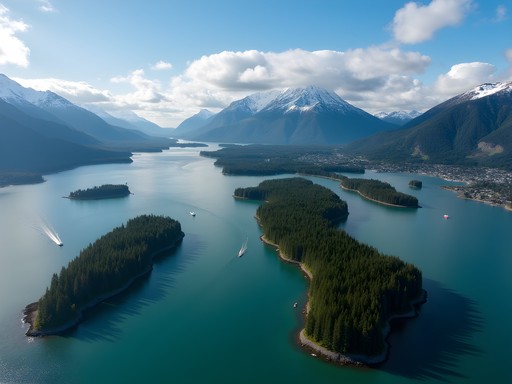
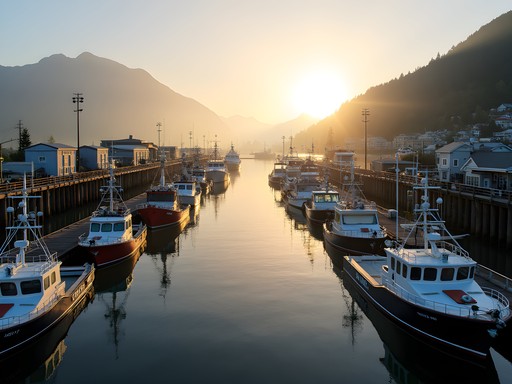
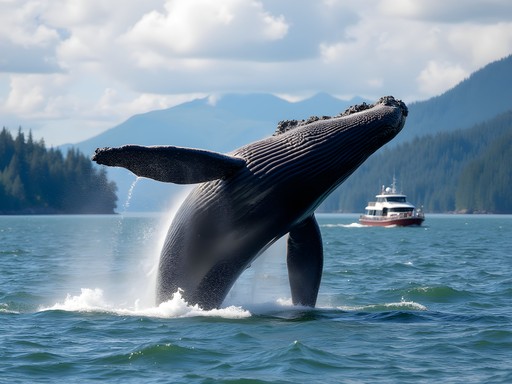
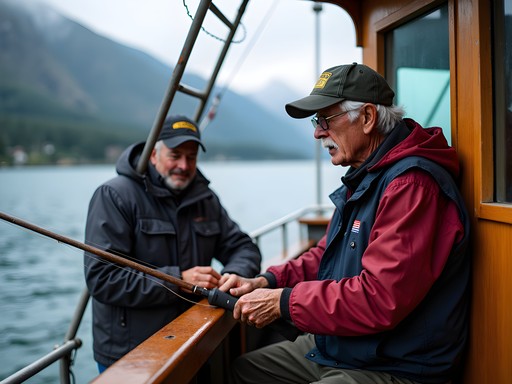



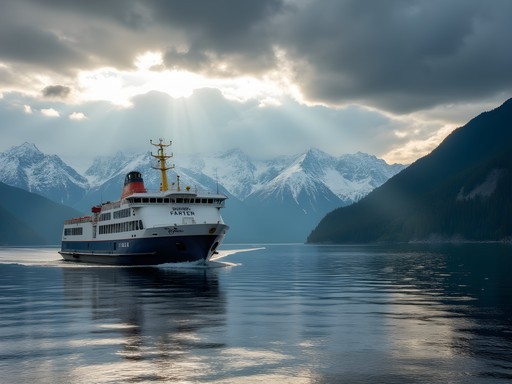

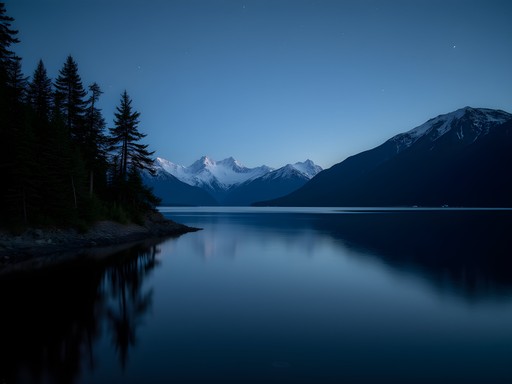





Comments
exploreace
Quick tip for anyone planning a visit - download the marine forecast app before you go. Cell service is spotty but if you pre-download the maps they work offline. Saved us from getting caught in a squall when we rented kayaks!
adventurenomad
Which app did you use? I've tried a couple but they were pretty unreliable in Alaska.
exploreace
We used Marine Weather Forecast Pro - the harbormaster recommended it. Not free but worth every penny when you're out there!
summerway
Those photos of the sea otters made my day! Can't wait to visit next year!
adventurenomad
Timothy's section on connecting with local maritime culture is spot on! We spent an afternoon with a Tlingit guide who showed us traditional fishing spots and explained how their community has adapted their ancestral practices. One tip I'd add - the harbormaster's office has a bulletin board where locals sometimes post about needing extra hands on fishing or supply runs. We helped a family deliver groceries to their cabin on a nearby island and got an amazing "locals only" experience plus dinner! Just be flexible with timing as these opportunities pop up randomly.
wanderlustbackpacker
Great post! Would September still be a good time to visit or is that pushing it weather-wise?
Taylor Moreau
September is actually my preferred time for Sitka - fewer tourists, slightly lower prices, and the weather is still quite manageable. You'll want proper rain gear though as precipitation picks up. The marine wildlife is still very active and the changing foliage adds beautiful colors to your boat trips. I've visited in both July and September and preferred the latter.
wanderlustbackpacker
Thanks so much for the insight! Definitely going to book for September then. Any specific rain gear you recommend?
Taylor Moreau
I always travel with waterproof pants - they pack small and have saved me countless times on Alaskan boats where spray is inevitable. A good waterproof shell with hood is essential too.
exploreace
Just got back from Sitka last month and this guide would've been SO helpful! We ended up figuring out the water taxi system on day 3 of our trip which was a game changer. The routes between islands opened up so many hidden spots tourists usually miss. That section about understanding the tidal schedules is spot on - we learned that lesson the hard way when we got stranded for an extra hour waiting for the water to rise enough for our return pickup. Spotted two humpbacks and a pod of orcas during our stay though, so absolutely worth any logistical challenges!
summerway
Were the orcas close to shore? Planning my trip for next summer and whale watching is top of my list!
exploreace
They were! Captain said it was unusual to see them that close to the harbor. If you're serious about whale watching, book with Sitka Wildlife Tours - our guide was incredible at finding them. Best $120 I spent the whole trip.
cityninja
That aerial shot of the harbor is stunning! Did you take that yourself?
smartlife
Great post! We're planning a family trip to Sitka next summer and I'm wondering about the water taxi services you mentioned. Are they reliable for daily use? We'll be staying about 15 minutes outside the main harbor area and debating between renting a car or using marine transport. Also, did you find the marine wildlife tours worth the price? We have two teenagers who would love to see orcas but I'm worried about spending $$$$ on a tour where wildlife sightings aren't guaranteed.
cityninja
We did the wildlife tours last year. Totally worth it! No orcas but tons of sea otters and we saw humpbacks. Kids loved it.
smartlife
Thanks for the feedback! That's reassuring to hear.
Taylor Moreau
Timothy, this guide is precisely what I needed before my upcoming business trip to Juneau with a planned extension to Sitka. Your section on connecting with local maritime culture resonated deeply with me. During my previous visit to Alaska in 2023, I found the ferry system somewhat confusing, so your breakdown of the schedules and routes is immensely helpful. I'm particularly interested in the wildlife viewing opportunities you mentioned. Did you find that morning or evening excursions yielded better wildlife sightings? I'll be bringing my waterproof binoculars this time - lesson learned from my last drizzly Alaskan adventure!
hikingperson
Those waterways look incredible! Sitka just moved up on my bucket list.
Taylor Moreau
You won't regret it! I found Sitka's marine landscape to be one of the most pristine in North America.
hikingperson
Thanks Taylor! Any particular month you'd recommend visiting?
Sophia Gomez
Timothy, your post captures the essence of Sitka's maritime charm perfectly! I was there on a business trip last year and managed to squeeze in a half-day whale watching tour. What struck me was how the locals have such a profound connection to the water - it's not just transportation, it's their lifeblood. The captain of my tour was a third-generation fisherman who pointed out spots where his grandfather used to set crab pots in the 1940s. That kind of living history is what makes Sitka special. Did you get a chance to visit the Maritime Heritage Center? Their collection of traditional Tlingit canoes and fishing gear really helped me understand how indigenous maritime practices shaped the region.
oceanchamp
Sophia, that sounds amazing! Adding the Maritime Heritage Center to my list now. Did you need to book the whale watching tour in advance or can you just show up?
Sophia Gomez
Definitely book in advance, especially if you're going during peak season (June-August). I used Sitka Wildlife Tours and they were fantastic, but they often sell out a week ahead.
Venture X
Premium card with 2X miles, $300 travel credit, Priority Pass